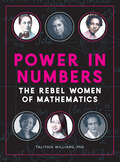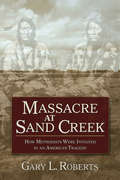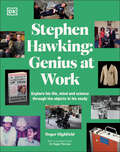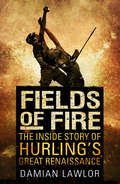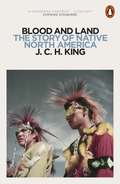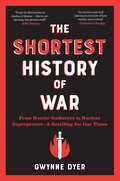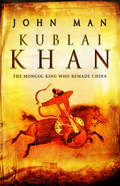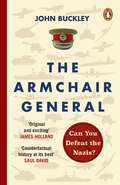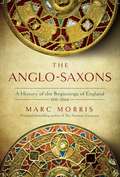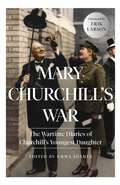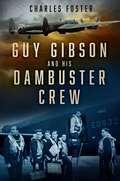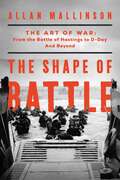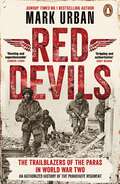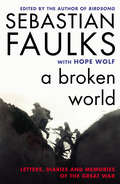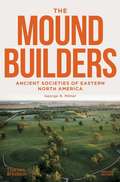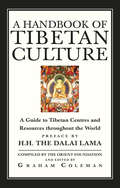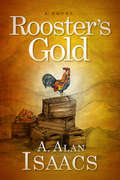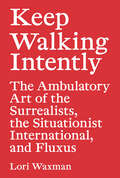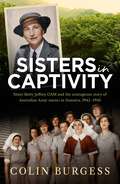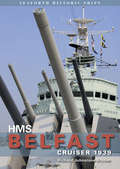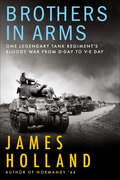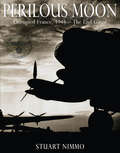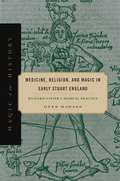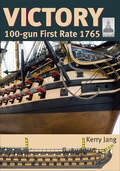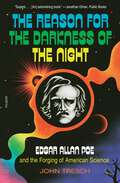- Table View
- List View
Power in Numbers: The Rebel Women of Mathematics
by Talithia WilliamsFrom rocket scientists to code breakers, “fascinating stories” of women who overcame obstacles, shattered stereotypes, and pursued their passion for math (Notices of the American Mathematical Society).With more than 200 photos and original interviews with several of the amazing women covered, Power in Numbers: The Rebel Women of Mathematics is a full-color volume that puts a spotlight on the influence of women on the development of mathematics over the last two millennia. Each biography reveals the life of a different female mathematician, from her childhood and early influences to the challenges she faced and the great achievements she made in spite of them. Learn how:After her father terminated her math lessons, Sofia Kovalevskaya snuck algebra books into her bed to read at nightEmmy Noether became an invaluable resource to Albert Einstein while she was in the NavyNative American rocket scientist Mary Golda Ross developed designs for fighter jets and missiles in a top-secret unitKatherine Johnson’s life-or-death calculations at NASA meant that astronauts such as Alan Shepard and John Glenn made it home aliveShakuntala Devi multiplied massive numbers in her head so her family could eat at nightPamela Harris proved her school counselors wrong when they told her she would only succeed as a bilinguial secretaryCarla Cotwright-Williams began her life in the dangerous streets of South-Central Los Angeles before skyrocketing to a powerful career with the Department of Defense in Washington, DCThese women are a diverse group, but their stories have one thing in common: At some point on their journeys, someone believed in them—and made them think the impossible was perhaps not so impossible.“A quick read . . . full of dramatic stories and eye-catching illustrations.” —MAA Reviews“I found myself marveling at the personal anecdotes and quotes throughout the book.” —Notices of the American Mathematical Society
Massacre at Sand Creek: How Methodists Were Involved in an American Tragedy
by Gary L. RobertsSand Creek. At dawn on the morning of November 29, 1864, Colonel John Milton Chivington gave the command that led to slaughter of 230 peaceful Cheyennes and Arapahos--primarily women, children, and elderly--camped under the protection of the U. S. government along Sand Creek in Colorado Territory and flying both an American flag and a white flag. The Sand Creek massacre seized national attention in the winter of 1864-1865 and generated a controversy that still excites heated debate more than 150 years later. At Sand Creek demoniac forces seemed unloosed so completely that humanity itself was the casualty. That was the charge that drew public attention to the Colorado frontier in 1865. That was the claim that spawned heated debate in Congress, two congressional hearings, and a military commission. Westerners vociferously and passionately denied the accusations. Reformers seized the charges as evidence of the failure of American Indian policy. Sand Creek launched a war that was not truly over for fifteen years. In the first year alone, it cost the United States government $50,000,000. Methodists have a special stake in this story. The governor whose polices led the Cheyennes and Arapahos to Sand Creek was a prominent Methodist layman. Colonel Chivington was a Methodist minister. Perhaps those were merely coincidences, but the question also remains of how the Methodist Episcopal Church itself responded to the massacre. Was it also somehow culpable in what happened? It is time for this story to be told. Coming to grips with what happened at Sand Creek involves hard questions and unsatisfactory answers not only about what happened but also about what led to it and why. It stirs ancient questions about the best and worst in every person, questions older than history, questions as relevant as today's headlines, questions we all must answer from within.
Stephen Hawking Genius at Work
by Roger HighfieldA behind-the-scenes tour of the inner sanctum of one of the world's most prominent scientific thinkers.In 2021, The Science Museum made a once-in-a-lifetime acquisition of the contents of Stephen Hawking's office. This book delves into that remarkable collection, using the seminal papers, items, and curiosities in his office to explain his theories and reveal more about one of the greatest minds in modern science. It's an unprecedented glimpse into the life of the best-known scientist of modern times. - Artifacts include:- A Simpsons bomber jacket gifted to him following his appearance on the show- A copy of Hawking's PhD thesis: Properties of an Expanding Universe- Singularities and the Geometry of Space, written at the beginning of his vital collaboration with Roger Penrose- His blackboard, where he debated ideas and doodled with his contemporaries- Scientific bets made with colleagues to prove (and sometimes disprove) his theories- His Permobil F3 wheelchair and communications systems- Hawking's Franklin medal and his CBE
Fields of Fire: The Inside Story of Hurling's Great Renaissance
by Damian LawlorThese are exceptional times for the game of hurling. The skill, speed and summer long edge of the seat drama of recent All Ireland championships has led many to conclude that something very special is happening in the ancient game.The Kilkenny team of the last decade has undoubtedly been the greatest in the history of hurling. Their extraordinary record speaks for itself. But has a chink finally begun to appear in Kilkenny’s armour? Or is it that the challengers have begun to catch up, at last recognising the immense effort required to compete at the highest level?Fields Of Fire tells the story of Kilkenny’s phenomenal success and explores how the Cats became an almost indomitable force. But it also looks at the profound challenge which their supremacy presented to other counties, revealing how the struggle for competitiveness has positively transformed the game. Old rivals have adapted and learned. But new powers too have emerged – from Clare and from Limerick, from Dublin and from Waterford - young bloods who do not fear the Kings of the Game.Drawing on exclusive interviews with dozens of current and former legends, among them Eddie Brennan, Cha Fitzpatrick, Brendan Cummins, John Mullane, Davy Fitzgerald, Damien Hayes, Liam Dunne, DJ Carey and Ger Cunningham, award-winning journalist Damian Lawlor offers a unique and compelling insight into hurling’s spectacular renaissance.
Blood and Land: The Story of Native North America
by J. C. KingBlood and Land is a dazzling, panoramic account of the history and achievements of Native North Americans, and why they matter today. It is about why no understanding of the wider world is possible without comprehending the original inhabitants of the United States and Canada: Native Americans, First Nations and Arctic peoples.This highly personal book, based on years of travel and first-hand research in North America, introduces a deeply complex story, of myriad identities and determined ethnicities - from the desert Southwest to the high Arctic, from first contact between Europeans and Native Americans to the challenges of Native leadership today. Instead of writing a chronological history, King confronts the reader with the paradoxes, diversity and successes of Native North Americans. Their astonishing ingenuity and supple intelligence enabled, after centuries of suffering both violence and dispossession, a striking level of recovery, optimism and autonomy in the twenty-first century.Beautifully illustrated and filled with arresting and surprising stories, Blood and Land looks well beyond the 'feathers-and-failure' narratives beloved by historians to show us Native North America as it was and is.
The Shortest History of War: From Hunter-gatherers To Nuclear Superpowers--a Retelling For Our Times (Shortest History #0)
by Gwynne DyerA brisk account of this defining feature of human society, from prehistory to nuclear proliferation and lethal autonomous weapons. The Shortest History books deliver thousands of years of history in one riveting, fast-paced read. War has changed, but we have not. From our hunter-gatherer ancestors to the rival nuclear powers of today, whenever resources have been contested, we’ve gone to battle. Acclaimed historian Gwynne Dyer illuminates our many martial clashes in this brisk account, tracing warfare from prehistory to the world’s first cities—and on to the thousand-year “classical age” of combat, which ended when the firearm changed everything. He examines the brief interlude of “limited war” before eighteenth-century revolution ushered in “total war”—and how the devastation was halted by the nuclear shock of Hiroshima. Then came the Cold War and Russia’s invasion of Ukraine, which punctured the longest stretch of peace between major powers since World War II. For all our advanced technology and hyperconnected global society, we find ourselves once again on the brink as climate change heightens competition for resources and superpowers stand ready with atomic bombs, drones, and futuristic “autonomous” weapons in development. Throughout, Dyer delves into anthropology, psychology, and other relevant fields to unmask the drivers of conflict. The Shortest History of War is for anyone who wants to understand the role of war in the human story—and how we can prevent it from defining our future.
Kublai Khan
by John ManIn Xanadu did Kubla KhanA stately pleasure dome decreeKublai Khan lives on in the popular imagination thanks to these two lines of poetry by Coleridge. But the true story behind this legend is even more fantastic than the poem would have us believe. He inherited the second largest land empire in history from his grandfather, Genghis Khan. He promptly set about extending this into the biggest empire the world has ever seen, extending his rule from China to Iraq, from Siberia to Afghanistan. His personal domain covered sixty-percent of all Asia, and one-fifth of the world's land area. The West first learnt of this great Khan through the reports of Marco Polo. Kublai had not been born to rule, but had clawed his way to leadership, achieving power only in his 40s. He had inherited Genghis Khan's great dream of world domination. But unlike his grandfather he saw China and not Mongolia as the key to controlling power and turned Genghis' unwieldy empire into a federation. Using China's great wealth, coupled with his shrewd and subtle government, he created an empire that was the greatest since the fall of Rome, and shaped the modern world as we know it today. He gave China its modern-day borders and his legacy is that country's resurgence, and the superpower China of tomorrow.
The Armchair General: Can You Defeat the Nazis? (The Armchair General #1)
by John BuckleyA ground-breaking approach to history where YOU choose the fate of WWII - perfect for readers of Bletchley Park Brainteasers and The GCHQ Puzzle Book.''An original and exciting approach . . . Buckley is one of our very finest historians.' JAMES HOLLAND________________________TAKE THE HOTSEATAssume the role of real Generals, Leaders, Soldiers and Intelligence Officers in the Allied Forces during WWII, including Winston Churchill and President Eisenhower.EXAMINE THE INTELLIGENCEExplore eight key moments of the war with real contemporaneous intelligence: Britain's Darkest Hour, 1940; The War in North Africa; Stalin's War on the Eastern Front; The Pacific Battle of Midway; The Dresden Bomber Offensive; Casablanca; Arnhem and Operation Market Garden; The Bomb and Hiroshima.CONSIDER THE SCENARIO & MAKE YOUR DECISIONFrom battlefields to war cabinets, each tactical and strategic decision you make leads to a different outcome.Will you follow the path of the past - or shape a new history?________________________'Wonderfully original . . . putting readers at the heart of the decision-making process and allowing them, literally, to change the course of history. This is counterfactual history at its best.' SAUL DAVID'A reminder that history is a never ending now, a relentless and endless present that comes without the luxury of hindsight.' AL MURRAY'An original and exciting approach . . . Buckley is one of our very finest historians. The Armchair General adds enormously to our understanding of the conflicts.' JAMES HOLLAND'A unique, enjoyable approach to evaluating military decision-making.' HISTORY OF WAR
The Anglo-Saxons: A History of the Beginnings of England: 400 – 1066
by Marc MorrisA sweeping and original history of the Anglo-Saxons by national bestselling author Marc Morris.Sixteen hundred years ago Britain left the Roman Empire and swiftly fell into ruin. Grand cities and luxurious villas were deserted and left to crumble, and civil society collapsed into chaos. Into this violent and unstable world came foreign invaders from across the sea, and established themselves as its new masters. The Anglo-Saxons traces the turbulent history of these people across the next six centuries. It explains how their earliest rulers fought relentlessly against each other for glory and supremacy, and then were almost destroyed by the onslaught of the vikings. It explores how they abandoned their old gods for Christianity, established hundreds of churches and created dazzlingly intricate works of art. It charts the revival of towns and trade, and the origins of a familiar landscape of shires, boroughs and bishoprics. It is a tale of famous figures like King Offa, Alfred the Great and Edward the Confessor, but also features a host of lesser known characters - ambitious queens, revolutionary saints, intolerant monks and grasping nobles. Through their remarkable careers we see how a new society, a new culture and a single unified nation came into being. Drawing on a vast range of original evidence - chronicles, letters, archaeology and artefacts - renowned historian Marc Morris illuminates a period of history that is only dimly understood, separates the truth from the legend, and tells the extraordinary story of how the foundations of England were laid.
Mary Churchill's War: The Wartime Diaries of Churchill's Youngest Daughter
by Mary ChurchillA unique and evocative portrait of World War II—and a charming coming-of-age story—from the private diaries of Winston Churchill's youngest daughter, Mary.&“I am not a great or important personage, but this will be the diary of an ordinary person's life in war time. Though I may never live to read it again, perhaps it may not prove altogether uninteresting as a record of my life.&” In 1939, seventeen-year-old Mary found herself in an extraordinary position at an extraordinary time: it was the outbreak of World War II and her father, Winston Churchill, had been appointed First Lord of the Admiralty; within months he would become prime minister. The young Mary Churchill was uniquely placed to observe this remarkable historical moment, and her diaries—most of which have never been published until now—provide an immediate view of the great events of the war, as well as exchanges and intimate moments with her father. But these diaries also capture what it was like to be a young woman during wartime. An impulsive and spirited writer, full of coming-of-age self-consciousness and joie de vivre, Mary's diaries are untrammeled by self-censorship or nostalgia. From aid raid sirens at 10 Downing Street to seeing action with the women&’s branch of the British Army, from cocktail parties with presidents and royals to accompanying her father on key diplomatic trips, Mary's wartime diaries are full of color, rich in historical insight, and a charming and intimate portrait of life alongside Winston Churchill during a key moment of the twentieth century.
Guy Gibson and his Dambuster Crew
by Charles FosterThe Dams Raid is the RAF’s most famous bombing operation of the Second World War, and Guy Gibson, who was in command, its most famous bomber pilot. Of the six men who made up his crew — two Canadians, an Australian and three Englishmen – only one had previously flown with him, but altogether they had amassed more than 180 operations. Drawing on rare and unpublished sources and family archives, this new study, written by the author of the acclaimed 2018 title, The Complete Dambusters, is the first book to fully detail their stories. It explores the previous connections between the seven men who would fly on just one operation together and examines how their relationships developed in the few months they spent in each other’s company.
The Shape of Battle: The Art of War from the Battle of Hastings to D-Day and Beyond
by Allan MallinsonA distinguished military historian tells the dramatic story of six defining battles in world history.Every battle is different. Each takes place in a different context—the war, the campaign, the weapons. However, battles across the centuries, whether fought with spears and swords or advanced technology, have much in common. Fighting is, after all, an intensely human affair; human nature doesn't change. So why were certain battles fought as they were? What gave them their shape? Why did they go as they did: victory for one side, defeat for the other? In exploring six significant feats of arms—the war and campaign in which they each occurred, and the factors that determined their precise form and course—The Shape of Battle answers these fundamental questions about the waging of war. Eschewing polemics, The Shape of Battle doesn't try to argue a case. It lets the narratives—the battles—speak for themselves.
Red Devils: The Trailblazers of the Parachute Regiment in World War Two: An Authorized History
by Mark UrbanA GRIPPING, AUTHORISED HISTORY OF THE DARING 'RED DEVILS' TOLD THROUGH THE FATES OF SIX HEROES.'Riveting . . . Full of daring action, standout characters and cutting edge operations, this is unputdownable' Damien Lewis'Gripping and authoritative. Family men, circus performers, solicitors, communists, and reactionaries all fought together and shed blood for their country - a true and moving story of war' Andy McNab------------------------------------Their German enemies called them the 'Red Devils'. Montgomery described them as 'men apart - every man an Emperor'. The cards they received on qualifying began: 'You are the elite of the British army'.The Parachute Regiment.In this gripping, authorized account, bestselling historian Mark Urban tells the story of the wartime creation and development of Britain's elite airborne infantry - who ranged from circus performers to solicitors, policemen to gravediggers, Christians and Jews to communists.Through the fates of six men - including recently widowed Geoffrey Pine-Coffin, who had to leave his little boy at home to head to the front, and Mike Lewis, whose photographs became iconic images of war - Urban vividly shows what it took to succeed in this new regiment. All six men would shed blood for their country in daring actions at D-Day, Arnhem and across the Second World War; two would not survive, and one would face disgrace.Based on deep archival research, British and German sources and new material from the men's families, and giving overdue recognition to the North African campaign, Urban's unvarnished history is a compelling and moving depiction of the highs and lows of battle.
A Broken World: Letters, Diaries and Memories of the Great War
by Sebastian Faulks with Hope WolfA lieutenant writes of digging through bodies that have the consistency of Camembert cheese; a mother sends flower seeds to her son at the Front, hoping that one day someone may see them grow; a nurse tends a man back to health knowing he will be court-martialled and shot as soon as he is fit. Edited by the bestselling author of Birdsong and Dr Hope Wolf, this is an original and illuminating non-fiction anthology of writing on the First World War.Diaries, letters and memories, testaments from ordinary people whose lives were transformed, are set alongside extracts from names that have become synonymous with the war, such as Siegfried Sassoon and T.E. Lawrence. A Broken World is an original collection of personal and defining moments that offer an unprecedented insight into the Great War as it was experienced and as it was remembered.
The Moundbuilders: Second Edition
by George R. MilnerBrought up to date with the latest research, The Moundbuilders is the definitive visual guide to North America’s eastern region and the societies that forever changed its landscape. Hailed by Bruce D. Smith, curator of North American archaeology at the Smithsonian Institution, as “without question the best available book on the pre-Columbian . . . societies of eastern North America,” this wide-ranging and richly illustrated volume covers the entire prehistory of the Eastern Woodlands and the thousands of earthen mounds that can be found there, built between 3100 BCE and 1600 CE. The second edition of The Moundbuilders has been brought fully up-to-date, with the latest research on the peopling of the Americas, including more coverage of pre-Clovis groups, new material on Native American communities in the thirteenth to sixteenth centuries CE, and new narratives of migration drawn from ancient and modern DNA. Far-reaching and illustrated throughout, this book is the perfect visual guide to the region for students, tourists, archaeologists, and anyone interested in ancient American history.
A Handbook Of Tibetan Culture: A Guide To Tibetan Centres And Resources Throughout The World
by Graham ColemanRooster's Gold: A Novel
by A. Alan IsaacsRe-experience historical fact as it is woven into the fictional fabric of the Hawkins family with Xander Hawkins, an extremely wealthy man from Tennessee, who engages a New York lawyer to create a Trust Fund to provide for the continuation of his dream: the encouragement, education, and care of orphans.A. Alan Isaacs invites readers to sit in Xander&’s study alongside the lawyer as he listens to stories about how the Hawkins family discovered a love for orphans and an unimaginable treasure! Over several days, the lawyer learns how more than 200 years of &‘Journaling&’ from Xander&’s ancestors continues to influence his approach to life. Along the way, readers can snap pictures of QR Codes embedded throughout Rooster&’s Gold to effortlessly connect the written word to an internet-based resource. Readers can also fact-check Xander&’s stories as his relatives encounter several of history&’s heroes, such as Davy Crockett, Theodore Roosevelt and his Rough Riders, and many more!After returning from the Spanish-American war, Rooster&’s son learns that orphaned and abandoned children are being put on trains in New York City and &‘whistle-stopped&’ across the United States to live and work on farms to produce crops for the country&’s exploding population. Witness how the stories of these Orphan Train Children profoundly impact the Hawkins&’ family—and the New York lawyer.
Keep Walking Intently: The Ambulatory Art of the Surrealists, the Situationist International, and Fluxus
by Lori WaxmanA study of walking as artistic action, from Surrealism to Fluxus.Walking, that most basic of human actions, was transformed in the twentieth century by Surrealism, the Situationist International, and Fluxus into a tactic for revolutionizing everyday life. Each group chose locations in the urban landscape as sites—from the flea markets and bars of Paris to the sidewalks of New York—and ambulation as the essential gesture. Keep Walking Intently traces the meandering and peculiar footsteps of these avant-garde artists as they moved through the city, encountering the marvelous, studying the environment, and re-enchanting the banal. Art historian Lori Waxman reveals the radical potential that walking holds for us all.
Sisters in Captivity: Sister Betty Jeffrey OAM and the courageous story of Australian Army nurses in Sumatra, 1942–1945
by Colin BurgessThe incredible account of Sister Betty Jeffrey OAM and the Australian war nurses who survived the bombing of evacuation ship SS Vyner Brooke in February 1942, and subsequently spent three years in Japanese prison camps in Sumatra. During those perilous years surviving in squalid conditions, Sister Jeffrey kept a secret diary of day-to-day events which, after the war, was turned into a hugely successful book and radio serial: White Coolies. She would often write of the powerful sisterhood that evolved as the prisoners of war took strength from each other, even forming a vocal orchestra. White Coolies was a major inspiration for the 1997 film Paradise Road.Sisters in Captivity builds on those diaries to not only re-live the years the nurses spent as POWs but also recounts the early life and influences that encouraged Betty Jeffrey into the field of nursing as a lifelong endeavour. A tireless advocate for returned nurses, she co-founded the Australian Nurses Memorial Centre with sole survivor of the Banka Island Massacre, fellow POW, and her longtime friend Vivian Bullwinkel. Featuring 32 pages of photos including personal mementos of Betty Jeffrey, courtesy of her family, and her drawings from the prison camps, this is a powerful account of women&’s resilience amidst the devastating brutality of war.
HMS Belfast: Cruiser 1939 (Seaforth Historic Ships)
by Richard Johnstone-BrydenHMS Belfast, originally a Royal Navy light cruiser, is now permanently moored on the Thames in London. One of ten Town-class cruisers she saw service on the icy Arctic convoys during the Second World War and was also present for the bombardment of the D-Day beaches in 1944. Later, she saw service during the Korean War.As is the case for many historic ships, however, there is a surprising shortage of informative and well illustrated guides, for reference during a visit or for research by enthusiasts—ship modellers, naval buffs, historians or students. This new series redresses the gap. Written by experts and containing more than 200 specially commissioned photographs, each title takes the reader on a superbly illustrated tour of the ship, from bow to stern and deck by deck. Significant parts of the vessel for example, the gun turrets and engine rooms are given detailed coverage both in words and pictures, so that the reader has at hand the most complete visual record and explanation of the ship that exists. In addition, the importance of the ship, both in her own time and now as a museum vessel, is explained, while her design and build, and her career prior to exhibition are all described.No other books offer such superb visual impact and detailed information as the Seaforth Historic Ship Series a truly groundbreaking concept bringing the ships of our past vividly to life.As seen in Discover Britain Magazine.
Brothers in Arms: One Legendary Tank Regiment's Bloody War from D-Day to V-E Day
by James HollandThe renowned historian and author of Normandy &’44 recounts the operations and personal experiences of the legendary Sherwood Rangers during WWII. One of the last cavalry units to ride horses into battle, the Sherwood Rangers were transformed into a &“mechanized cavalry&” of tanks in 1942. After winning acclaim in the North African campaign, they spearheaded one of the D-Day landings in Normandy and became the first British troops to cross into Germany. Their courage, skill and tenacity contributed mightily to the surrender of Germany in 1945. Inspired by Stephen Ambrose&’s Band of Brothers, historian James Holland profiles this extraordinary group of citizen soldiers. Informed by never-before-seen documents, letters, photographs, and other artifacts from Sherwood Rangers&’ families, Holland offers a uniquely intimate portrait of the war at ground level. Brothers in Arms introduces heroes such as Commanding Officer Stanley Christopherson, squadron commander John Semken, Sergeant George Dring, and others who helped their regiment earn the most battle honors of any in British army history. Weaving their exploits into the larger narrative of D-Day to V-E Day, Holland offers fresh analysis and perspective on the endgame of WWII in Europe.
Perilous Moon: Occupied France, 1944—The End Game
by Stuart Nimmo&“A volume that&’s not quite like anything else: the story of [the author&’s] father and the Nazi air ace who shot him out of the sky over Occupied France&” (Open Letters Monthly). Perilous Moon is a lavishly illustrated book that observes Occupied France during World War II through the eyes of British bomber pilot Neil Nimmo and newly discovered period photographs. Shot down by Luftwaffe night fighter pilot Helmut Bergmann, Nimmo and his crew were the German&’s sixth of seven victims in forty-six minutes. With seven wrecked Lancasters and thirty-eight Allied airmen killed, Bergmann had singlehandedly turned what should have been a relatively simple RAF raid into a life-long nightmare. With barely time to parachute from Q-Queenie, his stricken Lancaster, Neil Nimmo&’s unholy adventure had only just begun. Unusually, Perilous Moon follows both pilots, Nimmo and Bergmann, through the war after that April night, and continues to observe them as the Occupation of France comes to a sticky end. In the late 1980s, Neil Nimmo passed awat, but in Perilous Moon, his son Stuart Nimmo, a Paris-based documentary maker, closely chronicles the period with over two hundred original, previously hidden photographs. This unusual, fascinating book cuts through the fog that shrouded the Occupation and which continued to linger for decades to come. &“A masterwork of rare images and gripping narrative.&” —Mort Rosenbloom, former editor of The International Herald Tribune &“The detail in the book, including scores of photos and maps, is remarkable.&” —The Huffington Post &“A special volume among the many about the war.&” —The Columbus Dispatch
Medicine, Religion, and Magic in Early Stuart England: Richard Napier's Medical Practice (Magic in History)
by Ofer HadassThe astrologer-physician Richard Napier (1559-1634) was not only a man of practical science and medicine but also a master of occult arts and a devout parish rector who purportedly held conversations with angels. This new interpretation of Napier reveals him to be a coherent and methodical man whose burning desire for certain, true knowledge contributed to the contemporary venture of putting existing knowledge to useful ends.Originally trained in theology and ordained as an Anglican priest, Napier later studied astrological medicine and combined astrology, religious thought, and image and ritual magic in his medical work. Ofer Hadass draws on a remarkable archive of Napier’s medical cases and religious writings—including the interviews he claimed to have held with angels—to show how Napier’s seemingly inconsistent approaches were rooted in an inclusive and coherent worldview, combining equal respect for ancient authority and for experientially derived knowledge. Napier’s endeavors exemplify the fruitful relationship between religion and science that offered a well-founded alternative to the rising mechanistic explanation of nature at the time.Carefully researched and compellingly told, Medicine, Religion, and Magic in Early Stuart England is an insightful exploration of one of the most fascinating figures at the intersection of medicine, magic, and theology in early modern England and of the healing methods employed by physicians of the era.
Victory: 100-gun First Rate 1765 (ShipCraft #29)
by Kerry JangThe ‘ShipCraft’ series provides in-depth information about building and modifying model kits of famous warships. Previously, these have generally covered plastic and resin models of 20th century subjects, but this volume is a radical departure – not only a period sailing ship but one for which kits are available in many different materials and scales. This requires some changes to the standard approach, but the main features of the series remain constant. Victory, Nelson’s flagship at Trafalgar, is probably the world’s most famous sailing warship, and survives in restored form at Portsmouth. With lavish illustration, this book takes the modeller through a brief history of the ship, highlighting differences in appearance over her long career. Detailed color profiles reveal decorative detail and changes to paint schemes over 250 years, and outline some of the debatable features experts still disagree about. The modelling section reviews the strengths and weaknesses of available kits, lists commercial accessory sets for super-detailing, and provides hints on modifying and improving the basic kit, including the complexities of rigging. This is followed by an extensive photographic gallery of selected high-quality models in a variety of scales, and coverage concludes with a section on research references – books, monographs, large-scale plans and relevant websites. Following the pattern of the series, this book provides an unparalleled level of visual information – paint schemes, models, line drawings and photographs – and is simply the best reference for anyone setting out to model this imposing three-decker.
The Reason for the Darkness of the Night: Edgar Allan Poe and the Forging of American Science
by John TreschOne of The Christian Science Monitor's ten best books of JuneAn innovative biography of Edgar Allan Poe—highlighting his fascination and feuds with science.Decade after decade, Edgar Allan Poe remains one of the most popular American writers. He is beloved around the world for his pioneering detective fiction, tales of horror, and haunting, atmospheric verse. But what if there was another side to the man who wrote “The Raven” and “The Fall of the House of Usher”?In The Reason for the Darkness of the Night, John Tresch offers a bold new biography of a writer whose short, tortured life continues to fascinate. Shining a spotlight on an era when the lines separating entertainment, speculation, and scientific inquiry were blurred, Tresch reveals Poe’s obsession with science and lifelong ambition to advance and question human knowledge. Even as he composed dazzling works of fiction, he remained an avid and often combative commentator on new discoveries, publishing and hustling in literary scenes that also hosted the era’s most prominent scientists, semi-scientists, and pseudo-intellectual rogues. As one newspaper put it, “Mr. Poe is not merely a man of science—not merely a poet—not merely a man of letters. He is all combined; and perhaps he is something more.”Taking us through his early training in mathematics and engineering at West Point and the tumultuous years that followed, Tresch shows that Poe lived, thought, and suffered surrounded by science—and that many of his most renowned and imaginative works can best be understood in its company. He cast doubt on perceived certainties even as he hungered for knowledge, and at the end of his life delivered a mind-bending lecture on the origins of the universe that would win the admiration of twentieth-century physicists. Pursuing extraordinary conjectures and a unique aesthetic vision, he remained a figure of explosive contradiction: he gleefully exposed the hoaxes of the era’s scientific fraudsters even as he perpetrated hoaxes himself. Tracing Poe’s hard and brilliant journey, The Reason for the Darkness of the Night is an essential new portrait of a writer whose life is synonymous with mystery and imagination—and an entertaining, erudite tour of the world of American science just as it was beginning to come into its own.
